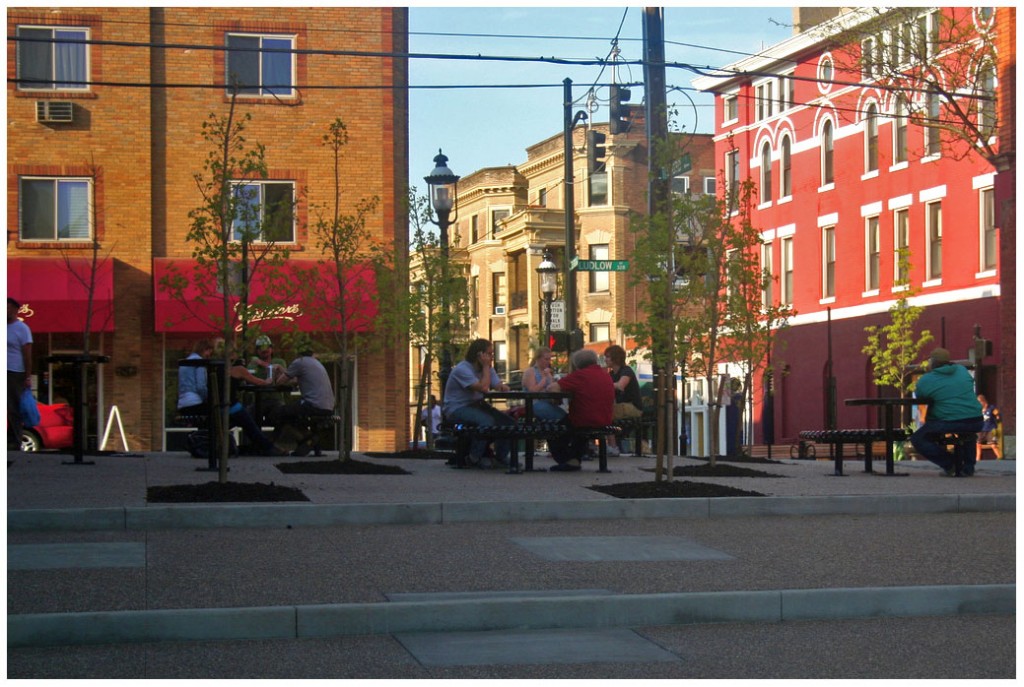 Clifton Plaza took the place of the former Bender Optical building along Ludlow Avenue in the heart of Clifton’s vibrant neighborhood business district. Early on in its concept people were concerned whether more open space was needed, or whether more businesses and people were needed in that central location. After seeing the results of a recently completed streetscaping project in combination with the new Clifton Plaza, it now appears that additional public space was very much in demand.
Clifton Plaza took the place of the former Bender Optical building along Ludlow Avenue in the heart of Clifton’s vibrant neighborhood business district. Early on in its concept people were concerned whether more open space was needed, or whether more businesses and people were needed in that central location. After seeing the results of a recently completed streetscaping project in combination with the new Clifton Plaza, it now appears that additional public space was very much in demand.
The new public space created along Telford Avenue added simple, yet functional, park benches along with a new community board for event postings and other random information. It took slightly longer to complete the new Clifton Plaza across the street, but the impact appears to be equally strong if early use is any indication.
The problem is not the creation of the new public space, but rather the design of it. The primary design flaw of Clifton Plaza is the fixed seating. Seating is extraordinarily important when it comes to public space design, and this type of seating design is straight out of the urban design playbook of two to three decades ago. Since that time several studies have indicated that users prefer movable seating options where they can assert their control over the space. This might mean the slight adjustment of a chair as one prepares to sit, or it might mean wholesale change to avoid or seek out sunlight.
“The possibility of choice is as important as the exercise of it. If you know you can move if you want to, you feel more comfortable staying put,” explained William H. Whyte in The Social Life of Small Urban Spaces. “This is why, perhaps, people so often move a chair a few inches this way and that before sitting in it, with the chair ending up about where it was in the first place. The moves are functional, however. They are a declaration of autonomy, to oneself, and rather satisfying.”
Whyte goes on to discuss how fixed seating is often awkward in public spaces as there is often much space around them as is the case at the new Clifton Plaza.
“The designer is saying, now you sit right here and you sit there. People balk. In some instances, the wrench the seats from their moorings,” Whyte continued. “Where there is a choice between fixed seats and other kinds of sitting, it is the other that people choose.”
Beyond user preferance, fixed seating allows for a less functional space. When planners redesigned Fountain Square, non-fixed seating in part helped to create a more open and flexible space better suited for the many events that attract thousands of people to the public space every week.
What works for Clifton Plaza is its large open area towards the back that will allow for flexible programming. A simple fix could be made by removing these fixed seating options and replacing them with non-fixed alternatives. This would create a more welcoming public space that encourages users to stay longer and take ownership of the space in a truly dynamic way.
